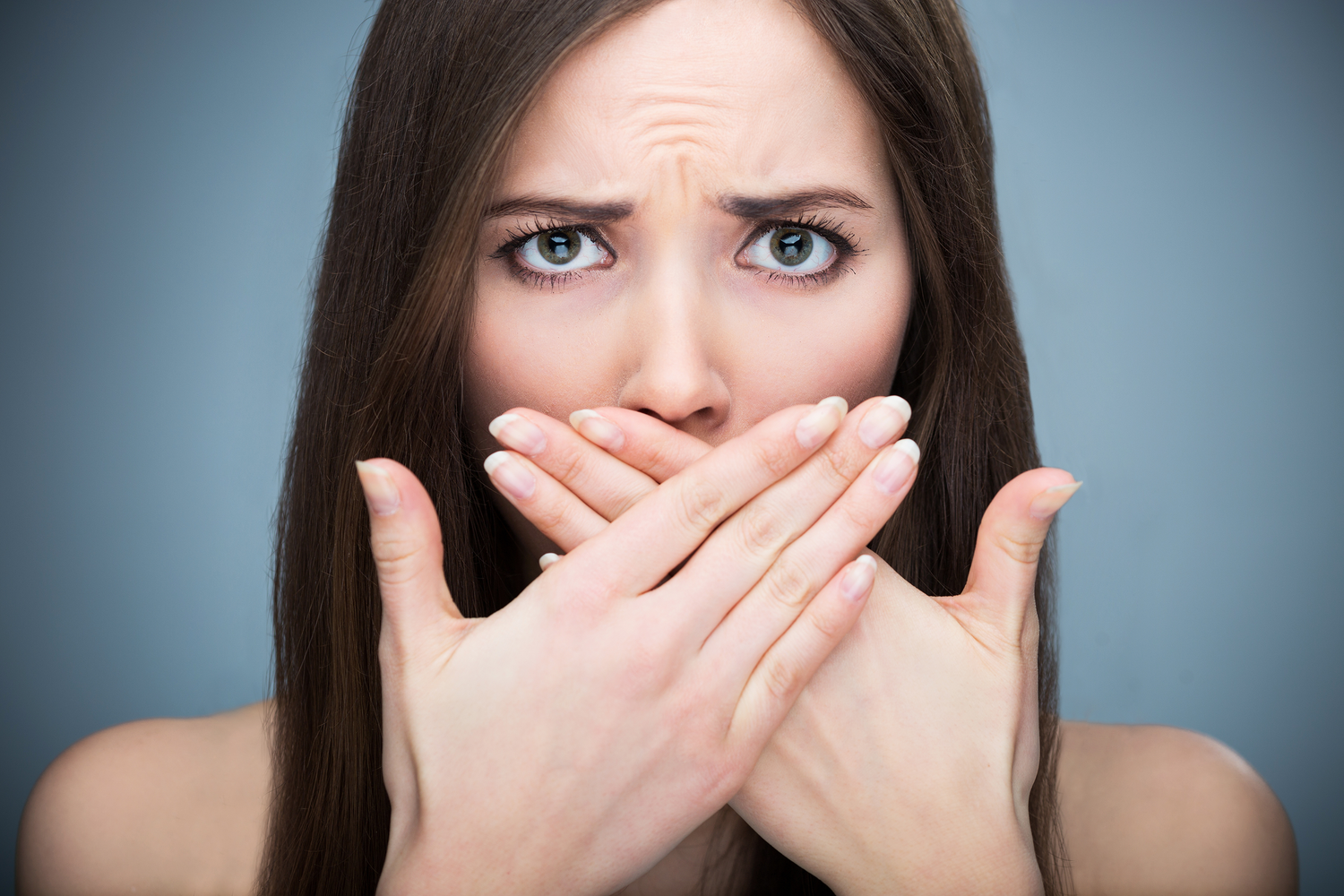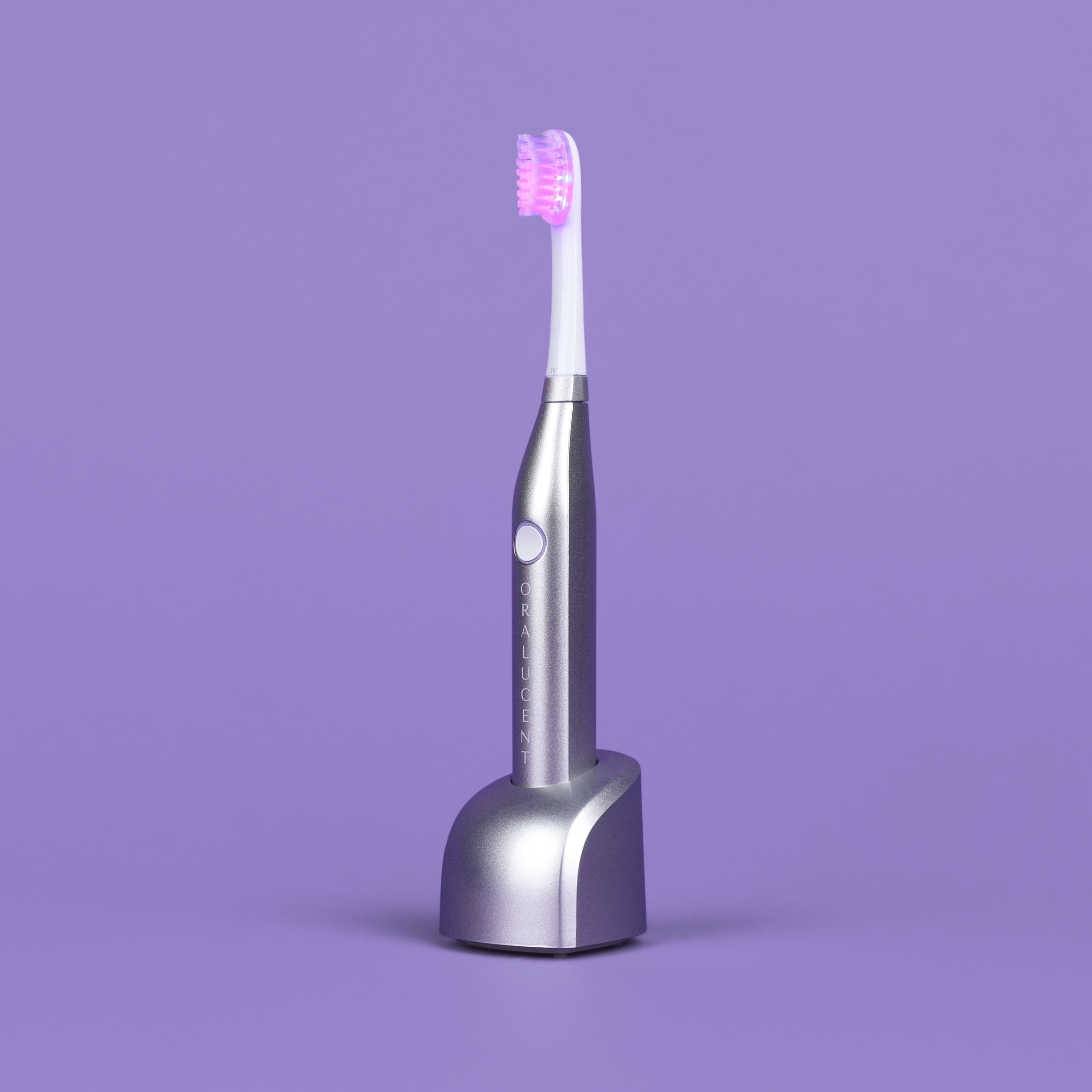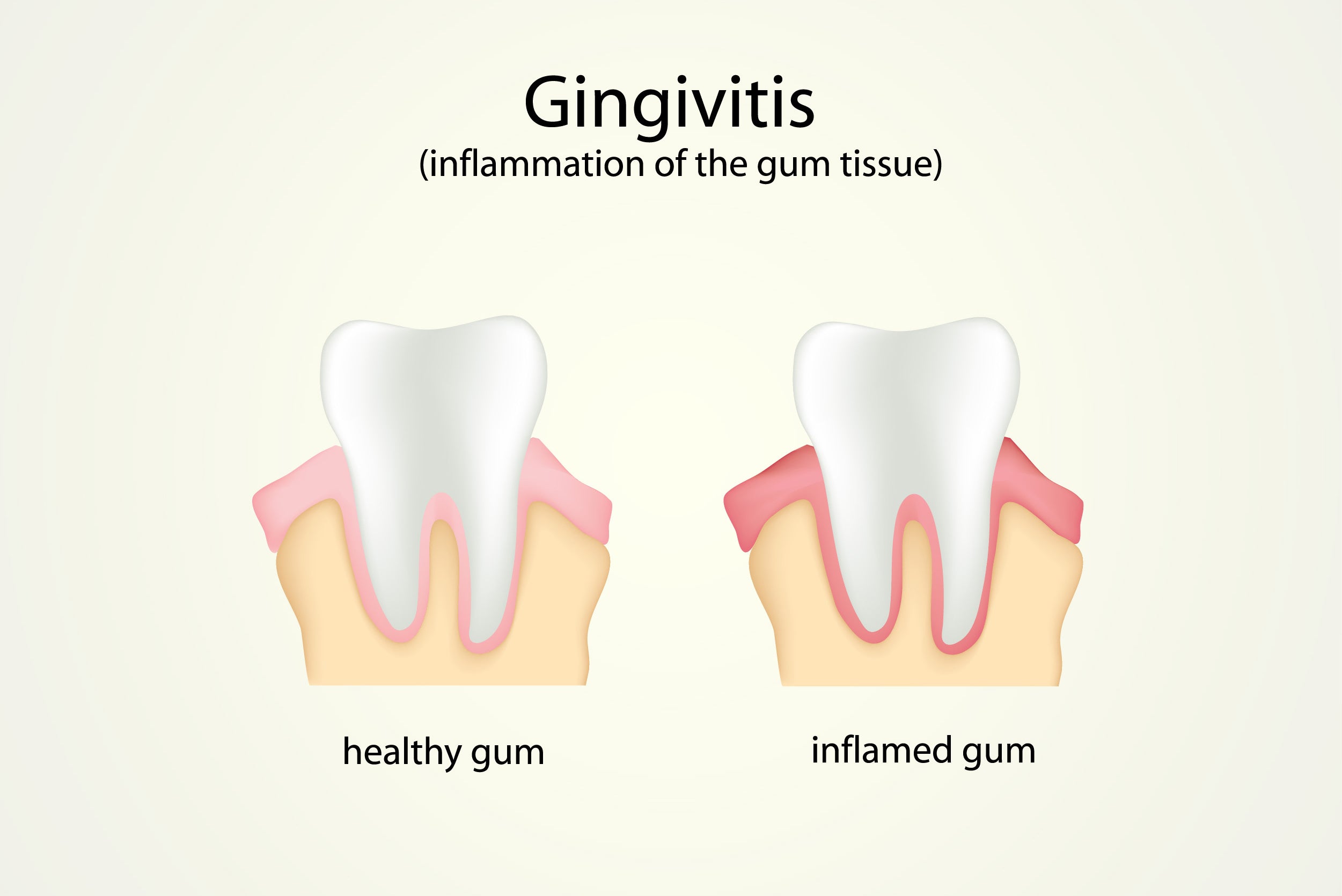Receding Gums causes
Knowing the causes of gum recession is the best way to avoid, prevent, and delay aggressive tissue loss. Some risk factors can lead to more aggressive gum recession, while others happen more slowly. Some of the most influential factors that result in gum recession include:
Periodontal Disease – Gum disease / periodontal disease causes infected gum tissue to detach from the surface of the tooth, causing deep gum pockets around the tooth as well as gum recession. Gum disease differs from gingivitis, which is just inflammation of gum tissue. Actual gum disease can result in permanent gum detachment from the tooth.

Aggressive tooth brushing – Believe it or not, brushing too hard, or using a toothbrush with stiff bristles can cause the gums to recede. This usually happens in the corners of the mouth, around canine teeth and premolars. Scrubbing repetitively back and forth can wear notches in the enamel as well as cause the sensitive gum tissue to creep down the surface of the tooth. Instead, use a soft toothbrush and only enough pressure to cause light blanching of the tissues.
Soft bristles: Provide just enough pressure to remove plaque biofilm and not damage the gum tissue if used correctly.
Medium bristles: Slightly more force, which can predispose the tooth to enamel abrasion and begin to induce gum recession.
Hard/Stiff bristles: Do not provide enough flex to access all areas around the curvatures of the teeth. Excessive force causes irritation to gum tissue, which induces recession and enamel abrasion.
Tobacco use – Both smoking and smokeless tobacco can cause severe gum recession. Smoking cigarettes causes the gum tissue to lose vital blood supplies, allowing secondary gum infections to take place and cause tissue loss. Using smokeless tobacco, or dip, physically irritates the tissues due to glass particles in the tobacco that aid in the nicotine entering into the system. This chronic, repetitive irritation will physically result in gum tissues being absent from the areas where the dip is frequently held. Moving the dip to different areas in the mouth can delay aggressive recession to an extent.
Lack of dental care – Rampant tooth decay or gum disease can cause significant problems before visible symptoms are present. Gum recession is a secondary result of untreated cavities, delayed cleanings, and persistent gum problems.
Misaligned teeth – Teeth that are misaligned are more susceptible to gum recession. Usually it is the one or two crooked teeth that become susceptible, due to the tissues being pulled in the other direction or from the excess trauma to the tooth being jetted out into the wrong position. Misaligned teeth can also get more tartar buildup because they’re difficult to keep clean with regular brushing and flossing, which will cause gum disease and recession.
Piercings of the lip or tongue – Chronic irritation from a lip or tongue piercing can cause gingival tissue to shift out of place, exposing the tooth. Even if the piercing does not feel bothersome, the repetitive rubbing against soft tissues will still cause gradual damage to the tissues. There may or may not be discomfort associated with the jewelry rubbing against the gums.
Genetic influences – People whose parents had chronic gum recession from gum disease or misalignment may be predisposed to develop the condition themselves. Bacteria can be passed from a parent to the child, and anatomical factors may simply be inherited.
Accelerated Orthodontic Treatment – Moving the teeth too quickly during orthodontic treatment can cause gum recession to occur, due to the body’s inability to adjust to rapid tooth movement. Slower movements keep bone levels healthy and maintain proper gum levels.
Receding Gum symptoms
The most obvious symptom of gum recession is the visible shift of gum tissue down the root of the tooth, causing the yellow dentin to be exposed. There are several other symptoms associated with recession, but the exposure of the roots usually can’t be missed. Depending on which risk factor is
- Sensitivity
- Yellow appearance of roots
- Stained teeth
- Susceptibility to decay
- Long teeth
- Spaces between teeth
- Food packing
Unlike gum disease, gum recession will make teeth:
- Look yellow
- Have heightened sensitivity
- Be more prone to developing cavities
Gum Recession treatment
There are a few different types of approaches to the treatment of receded gums, and each one depends on the cause of the gum recession as well as the severity. Some of the treatments are more proactive to help avoid aggressive recession, while others are the only ones available for severe cases.
Laser treatments and periodontal therapy - Utilizing periodontal therapy through your dentist can help eliminate the deep bacteria that cause gum tissue to detach from the tooth. Some dentists will also offer laser therapy to help sanitize the pocket area of bacteria, so that the disease process is halted. When diseased areas are cleaned and maintained properly, it is possible for some gingival tissue to re-connect with the tooth surface, preventing further recession.
Tobacco cessation - There’s never been a better time to kick the habit. No matter if it’s smoking or dip tobacco, giving up the habit will not only save you money, it will also save your gum tissue. Gum tissue will have better circulation and less irritation, keeping it tighter around the root.
Oralucent Toothbrush - By utilizing Oralucent's blue light technology, you can target the bacteria that causes infected gum tissue that leads to receding gums. With daily use of the Oralucent toothbrush you allow your gingival tissue the time it needs to re-connect with the tooth surface, which in turn prevents further gum recession.
Soft toothbrushing - Using a soft bristled toothbrush (preferably electric, as these remove more bacteria), angle the brush toward the gums and gently cleanse the area twice each day. Aggressive brushing or brushes that have stiff bristles will cause recession to become more severe, while soft brushing will help maintain healthy gum levels.
Surgery options for Receding Gums
Soft Tissue Grafting - Tissue grafting can be used to recover the area of gum recession when the tissue loss is severe. The tissue is either taken from another portion of your mouth, or from a donor, and is then applied to the area where the tissue has been lost, recovering the surface of the tooth that has lost gum coverage. Some methods of grafting require sutures, while others are covered along the edges by existing gum tissue. Depending on the type of graft being placed, recovery can vary. Donor grafts are typically easier, while grafts coming from your own body will cause discomfort at the site where the tissue is being taken from.
Pocket Depth Reduction / Crown Lengthening - When recession is associated with advanced gum disease, it may be necessary to reduce the depth of the diseased pocket, so that oral hygiene is easier to maintain. This procedure is called crown lengthening or pocket reduction, and involves the removal of diseased tissue, so that there is only a small amount of detached gum around the dental pocket surrounding the tooth. This allows flossing and brushing to be more effective, keeping the area clean and preventing disease progression. However, this treatment also causes teeth to appear longer and may predispose your root surfaces to sensitivity, as there is less coverage. It is used when disease progression is severe and teeth are at risk for loss due to the lack of support.
Types of gingival grafting tissues:
From a donor site on your own body
- Roof of mouth
- Nearby gingival tissue
Take these steps to prevent Receding Gums
As with most diseases and complications, the best way to address gum recession is to prevent it from happening.
Regular dental cleanings - Routine dental cleanings help prevent tartar and bacteria buildup from causing gum disease and recession. Dentists and hygienists recommend that you have your teeth cleaned at least twice each year to remove small amounts of tartar before causing severe disease. Most people don’t remove all of the bacteria even if they brush twice each day, so some is left over that can harbor gum disease. Your hygienist has special instruments that can remove bacteria from areas that aren’t accessible with floss or toothbrushes.
Orthodontic therapy - Even before gum recession is evident, proactive treatment can correct misaligned teeth so that they don’t develop recession, or so that it doesn’t become too severe. While rapid tooth movement can cause recession, slow and precise orthodontic care can help align teeth properly so that the gums are not at risk. Properly aligned teeth are also easier to keep clean, so there is less risk to develop gum disease, recession, and cavities. Most orthodontic treatment can be completed within 12-24 months, depending on the severity of the case.
Bite splints - Excessive pressure from grinding, clenching, or bruxism can cause enamel to chip away and gums to recede. Wearing a custom fitted bite splint or night guard can reduce the strain placed on your teeth, preventing generalized wear and gum recession. Some people wear splints at night, while others need them in the daytime when they find their stress is elevated. Custom fitted guards provide better coverage and are more comfortable to wear.
Soft toothbrushing - Using a soft bristled toothbrush (preferably electric, as these remove more bacteria), angle the brush toward the gums and gently cleanse the area twice each day. Aggressive brushing or brushes that have stiff bristles will cause recession to become more severe, while soft brushing will help maintain healthy gum levels.
Full mouth - Cover the entire chewing surface of all teeth in one arch, either the upper or lower.
Anterior - Cover only a few anterior teeth, preventing the mouth from closing completely and thus preventing wear of the opposite arches against one another.




